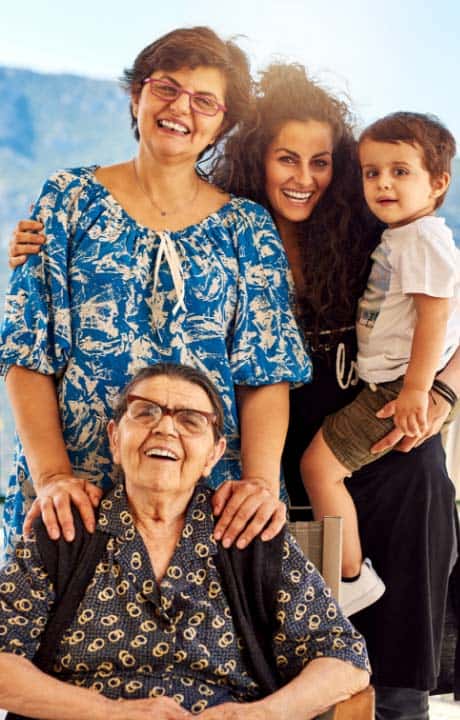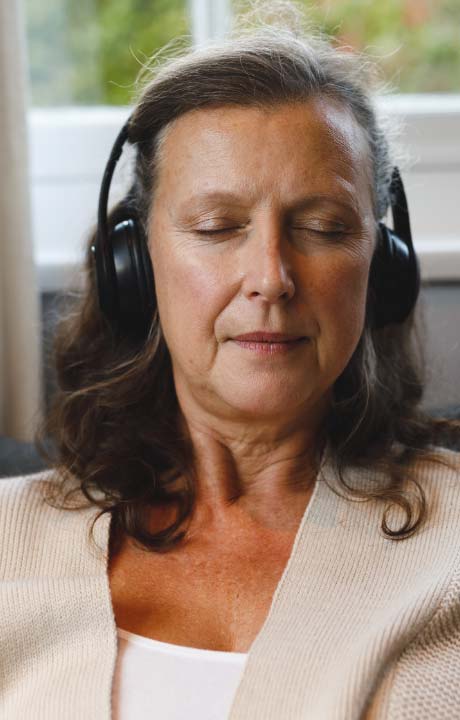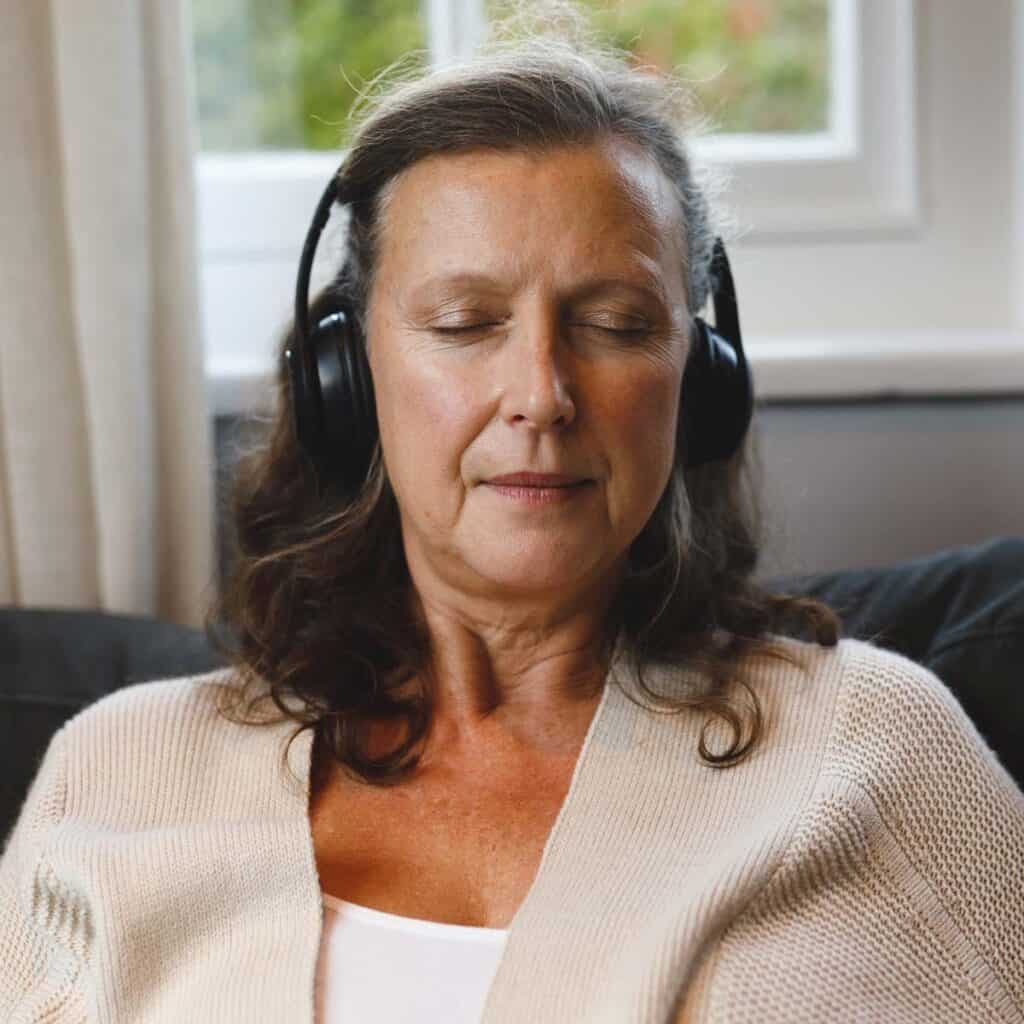Awakening Aliveness: A Somatic Approach to Healing Attachment Trauma
Includes 5 client demonstration-based training sessions with Peter A. Levine, PhD and Dr. Diane Poole Heller
Course Description
Learn to apply somatic techniques to help clients release stuck patterns, ease physical tension, and heal attachment wounds stored in the body.
What’s included in the training?
Here is everything you get for just $267!
Five On-Demand 90-Minute Demonstration-Based Sessions + Q&A, featuring client demo debriefs by Peter A. Levine, PhD and Dr. Diane Poole Heller.
Each session includes core teaching, real client demos (with thorough explanations of techniques by Dr. Levine), practice exercises, corrective techniques and additional resources you can apply to your own therapeutic sessions.
- Session 1: Restoring Aliveness and Easing Chronic Pain After Attachment Trauma
- Session 2: Navigating Procedural Memory from Life-Threatening Experiences Coupled with Attachment Trauma
- Session 3: Working with Generational Trauma and Chronic Bracing Patterns
- Session 4: Releasing Override Patterns to Restore Connection
- Session 5: Supporting Individuation After Early Neglect and Trauma
Includes practical exercises that reinforce concepts and help you integrate somatic skills and techniques with other modalities more easily.
Client Demos that help new and experienced practitioners become more proficient at applying somatic skills and techniques into therapeutic sessions with clients.
Private Course Portal with Lifetime Access to Course Materials including video recordings, audio, transcripts, demos, and slide handouts and additional resources for each session.
BONUS #1: Two Client Demo Video Trainings with Dr. Diane Poole Heller
In TWO recorded demo sessions, Dr. Diane Poole Heller shows you how to address intergenerational trauma patterns and “parentified child” dynamics.
Using the DARe approach and somatic techniques, these sessions explore practical ways to support emotional regulation and repair attachment wounds.
- Learn how to apply the DARe approach to create emotional space and support secure attachment.
- Discover how to integrate additional somatic techniques to help clients navigate inner child dynamics and unresolved trauma.
- Gain practical tools for tracking physiological markers, such as breath patterns, to guide somatic interventions.
BONUS #2: Trauma Symptoms Checklist + Resilience Checklist from Dr. Diane Poole Heller
Get insights into how trauma might be affecting you or your clients.
Since everyone responds to past trauma differently––and there Is no single way to think, feel, behave, or heal—these practical resources are designed to help you identify common responses and symptoms of trauma and assess progress on the healing journey.
When used in tandem in therapy, these checklists give clients a clear way to see and understand their progress. First, the Trauma Checklist is used to assess a client’s status at the beginning of therapy to set a reference point from which changes or progress can be measured.
Then, the Resilience Checklist gauges progress after therapy—and showcases the benefits of that treatment for health and well-being. You can also use it to streamline report creation and incorporate it into session notes.
*Available to print, download or use digitally as a fillable PDF
Why take this course?
Your clients may not always have the words to explain their trauma, but their bodies often do.
That tightness in their chest, the weight on their shoulders, or that lingering sense of disconnection––it’s the body’s way of holding onto attachment wounds that were never fully processed.
These patterns often trace back to early relationships with primary caregivers, where safety, care, or connection may have been inconsistent or absent during key developmental stages.
In response, the body learns to protect itself from emotional pain, rejection, or overwhelm. It might do this by holding tension, restricting breath, or shutting down emotionally.
These protective responses are the nervous system’s way of managing overwhelming emotions or preventing further damage when other support isn’t available.
But the body doesn’t always recognize the danger has passed.


Over time, these protective patterns can become default responses, shaping how people experience relationships and cope with stress as adults.
Even in safe, supportive environments, the nervous system may still react as if it’s under threat––keeping the body tense, hyper-vigilant, or distant.
This can leave clients feeling stuck, wondering why, despite their best efforts, they can’t relax, open up, or feel fully present in their relationships.
When clients stay stuck in the same patterns week after week, it can leave even the most experienced clinicians questioning their approach.
Clients may gain insight and recognize the roots of their trauma, but their body seems to tell a different story. They remain guarded, tense, or distant, and yet, nothing seems to shift.
It’s frustrating—even exhausting—to feel like you’re doing everything right but still hitting an invisible wall. Without tools to address what’s stored in the body, progress stalls, and both you and your clients stuck.
What you’ll learn?
In this self-paced, on-demand training, you’ll learn how to…
- Demonstrate a minimum of three somatic techniques for addressing chronic pain and fatigue.
- Identify and summarize at least three physical cues that indicate the presence of stored trauma in the body.
- Explain how to recognize and address “override patterns” that may mask strength or stability.
- Detail two or more ways generational trauma manifests in physical holding patterns.
- Explain and demonstrate the application of pendulation to facilitate the release of trauma held in the body.
- List and describe somatic strategies for addressing complex trauma, including medical trauma and attachment injuries.
Here’s what’s in the training curriculum…
Session 1
Restoring Aliveness and Easing Chronic Pain After Attachment Trauma
In this first session, Dr. Levine works with O’Brien, a 45-year old professional navigating chronic pain, severe fatigue, and nervous system dysregulation. Her challenges stem from early attachment trauma—marked by neglect and emotional disconnection—which left her body stuck in protective survival patterns. Over time, her pain was compounded by multiple accidents and physical injuries, deepening her sense of physical and emotional “shut down.”
Dr. Levine introduces specific somatic techniques that address unresolved trauma held in the body as chronic holding patterns, physical tension, and suppressed vitality. He demonstrates how to safely release survival responses and help clients reconnect with their life force using titration, pendulation, and orienting.
Dr. Levine also shares the Voo Breath Exercise, a sound-based technique used to regulate the nervous system and support clients with unresolved attachment injury, highlighting how to use it with clients who show chronic holding and emotional shutdown to restore a sense of safety and connection.
- Recognize chronic pain as a sign of unresolved attachment trauma—Learn to identify body-based signs of attachment injuries, like physical tension, bracing, and emotional shutdown.
- Use somatic techniques to release holding patterns —See how to apply titration, pendulation, and orienting to guide clients toward safety, ease, and emotional flexibility.
- Implement the VooBreath in clinical sessions—Practice the technique to understand its role in calming the nervous system, releasing stored tension, and supporting emotional connection.
- Help clients move from protective responses to a sense of aliveness—Guide clients out of physical and emotional shutdown, so they can experience vitality, openness, and connection.
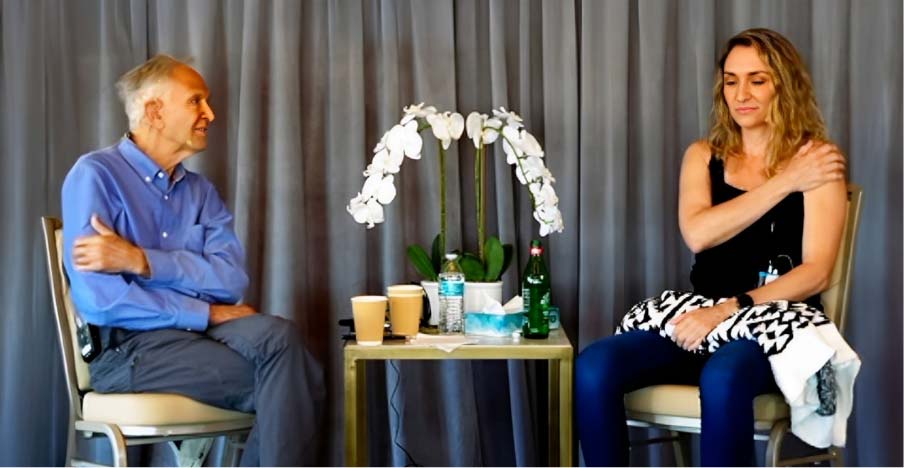
Session 2
Navigating Procedural Memory from Life-Threatening Experiences Coupled with Attachment Trauma
In this session, Dr. Levine works with Mitchell, a 35-year-old man who has survived multiple car accidents, early childhood neglect, and complex medical trauma. His body holds the unresolved procedural memory of near-death experiences alongside attachment wounds from an insecure and abusive upbringing. Mitchell struggles with involuntary body movements, emotional numbness, and finding closure with his traumatic past.
Dr. Levine demonstrates how to work with the body’s unconscious patterns—such as involuntary movements, tension, and postural shifts—that hold the memory of trauma. He explains how to observe and gently guide these procedural memories to completion, helping clients release bound energy and regain emotional and physical regulation. By tracking the body’s natural rhythms of contraction and expansion, practitioners will learn how to support clients in processing complex trauma safely and effectively.
Students will also practice Sensation Tracking with Pendulation, an exercise to develop awareness of how the body contracts and expands while processing trauma.
- Recognize physical cues of unresolved trauma—Learn to identify unconscious tension, posture, and movement patterns that reflect stored trauma from life-threatening events and attachment injuries.
- Work with procedural memory in clinical sessions—Safely address involuntary movements and physical holding patterns to help clients release survival responses and process trauma.
- Support nervous system regulation—Deepen your understanding of titration and pendulation to help clients track sensations, stay present with difficult emotions, and build resilience.
- Address the interplay of developmental and shock trauma—Release the effects of attachment wounds and life-threatening experiences that shape survival patterns and keep clients stuck.
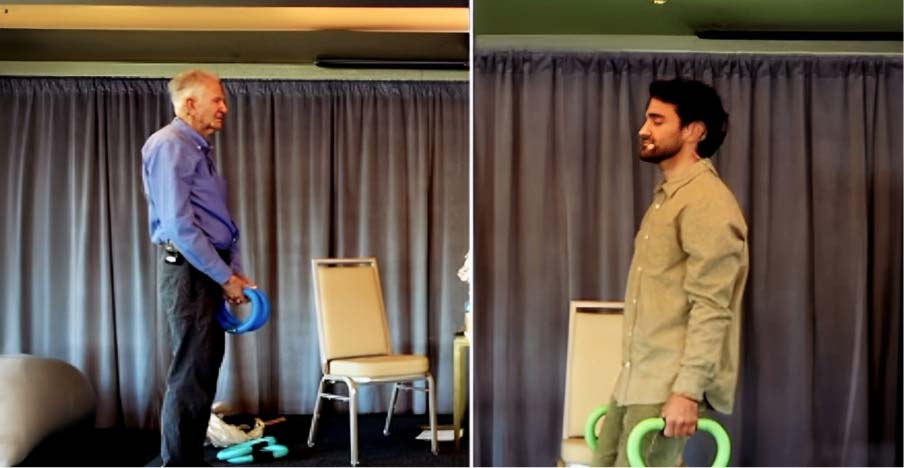
Session 3
Working with Generational Trauma and Chronic Bracing
In this session, Dr. Levine works with Nelofer, a 44-year-old woman whose story highlights the intersection of cultural, religious, and generational trauma. Growing up in a strict Muslim family and feeling disconnected from her cultural identity, Nelofer endured sexual exploitation by a trusted community figure and a near-fatal fall in her teens that compounded her physical and emotional struggles.
These experiences left her body locked in chronic bracing patterns, further exacerbated by later back injuries. Although she has achieved success in her career, she continues to struggle with physical pain and freeze responses when managing the stress of large projects.
Dr. Levine demonstrates how specific techniques––such as supportive touch and pendulation––release chronic bracing patterns and can help clients better navigate strong emotions like vulnerability, sadness, and anger. He shows how tracking pain and its periphery can help clients shift attention between discomfort and ease, soften defense, and allow them to reconnect with their emotions.
- Recognize generational trauma in physical patterns—Learn to identify ways in which familial and cultural trauma manifest as chronic tension, pain, and protective postures in the body.
- Support emotional release and physical softening—Apply gentle, effective skills to help clients access and process overwhelming emotions, encouraging greater openness and resilience.
- Navigate the complexity of cultural identity in trauma work—Develop sensitivity to how cultural and familial dynamics influence attachment wounds and chronic physical pain.
- Facilitate the release of partial dissociation—Learn techniques to help clients reconnect with their body and emotions when parts of their experience remain fragmented or disconnected.
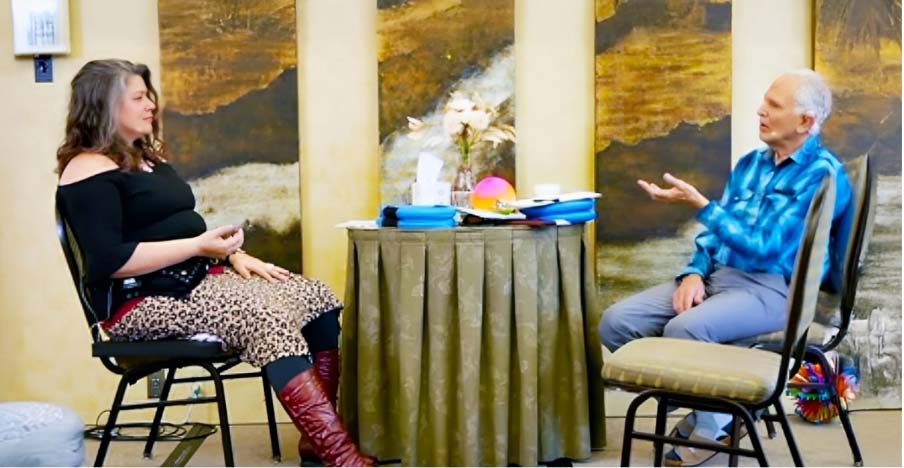
Session 4
Releasing Override Patterns to Restore Connection
In this session, Dr. Levine works with Calvin, a 41-year-old man whose early parentification led to persistent override patterns—rigid survival strategies suppressing his emotional and bodily needs to maintain control.
Growing up with an alcoholic father suffering from PTSD, Calvin was forced to manage his father’s volatile behavior while neglecting his own emotions.
These early experiences shaped patterns of emotional detachment and physical bracing that persist even after years of effort to build stability and address the effects of his childhood. Despite progress in many areas, his early survival strategies continue to limit his ability to fully access and express his emotions.
Dr. Levine demonstrates how to work with clients who use override patterns to mask pain and maintain a facade of stability. Using movement, sound, and breathwork, he shows how to gently release these protective responses, supporting clients in accessing their emotions, rebuilding a sense of safety, and shifting from rigid to authentic emotional connection.
- Recognize override patterns in emotional and physical responses—Learn to identify rigid coping strategies, such as hyper-control and emotional detachment that mask deeper pain and overwhelm.
- Support clients in releasing protective responses without collapse—Discover techniques to help clients safely let go of rigid defenses, creating space for authentic emotional expression.
- Work with breath patterns to promote regulation—Explore how to guide clients in shifting from controlled, shallow breathing to natural, rhythmical patterns that encourage ease and connection.
- Facilitate deeper emotional connection—Help clients move past emotional masking so they can experience more aliveness, openness, and real connection with others.
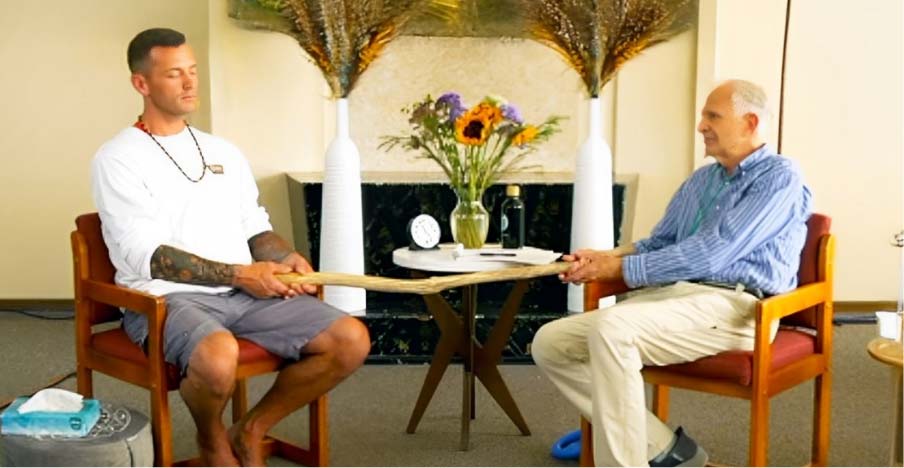
Session 5
Supporting Individuation After Early Neglect and Trauma
In this final session, Dr. Levine works with Chris, a 44-year-old woman navigating the effects of caregiver neglect, religious abuse, chronic illness, and complex medical trauma.
Raised by emotionally absent parents, she learned to prioritize others’ needs while suppressing her own—a pattern reinforced by the control and isolation of a religious organization where she experienced significant trauma.
While Chris has moved beyond a freeze response, she remains caught in a flight response pattern, struggling to feel grounded or secure in her intimate relationships––disconnected from her own power, voice, and boundaries. Dr. Levine demonstrates how to support healthy individuation.
Using embodied techniques like psychodrama, supportive touch, and somatic movement, he shows how to help clients release physical and emotional patterns tied to caregiving roles, and reclaim a sense of personal agency. He also introduces the Pillow Squeeze Practice, a simple tool for releasing pent-up energy, promoting assertiveness and healthy boundary-setting.
- Support individuation from early caregiving roles—Help clients break self-sacrificing patterns from childhood neglect and prioritize their own needs and desires.
- Help clients reclaim their authentic voice and power—Use psychodrama and embodied sound to help clients express their emotions, access their inner power, and develop a stronger sense of self.
- Nurture healthy assertiveness—Help clients channel pent-up “aggressive” energy to restore a more balanced relationship with their natural drive for boundary-setting and self-protection.
- Address the “flight mode” response—Use movement, touch, and breath to help clients shift from an activated state to feeling more safe, calm, connected, and present.
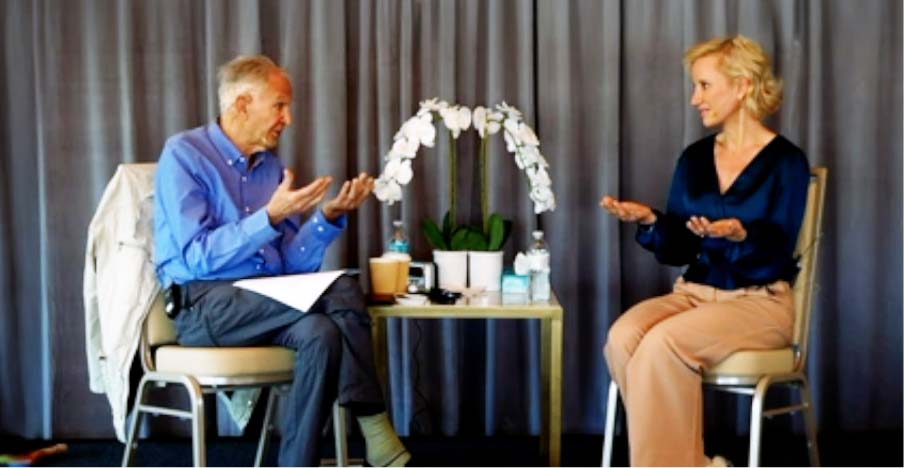
Meet Your Instructors
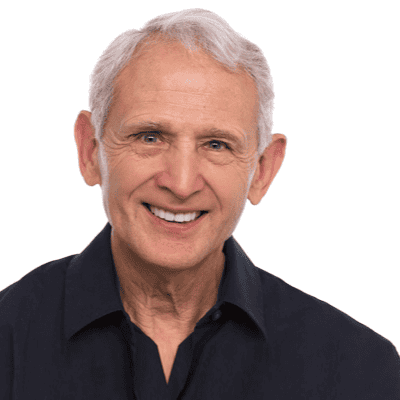
Trauma is not what happens to us, but what we hold inside in the absence of an empathetic witness.
Peter A. Levine, PhD is the developer of Somatic Experiencing®, a naturalistic and neurobiological approach to healing trauma, which he has developed over the past 50 years.
He is the Founder of the Somatic Experiencing® Trauma Institute/Foundation for Human Enrichment and the Founder and President of the Ergos Institute of Somatic Education™.
His work has been taught to over 50,000 therapists in over 45 countries.
Dr. Levine served as a stress consultant for NASA in the early space shuttle development and has served on the American Psychological Association task force for responding to the trauma of large-scale disasters and ethno-political warfare.
He holds doctorates in both Biophysics and Psychology and is the author of several best-selling books on trauma, including Waking the Tiger, which is published in over 29 languages––and his new memoir, An Autobiography of Trauma: A Healing Journey.
He is currently a Senior Fellow and consultant at The Meadows Addiction and Trauma Treatment Center in Wickenburg, Arizona as he continues to teach trauma healing workshops internationally.


Our goal is to uncover secure attachment, allowing it to prevail over relational trauma or to help us recover more quickly from distress.
Dr. Diane Poole Heller is an internationally recognized speaker, author, and teaching expert in the field of adult attachment theory and trauma resolution.
Her signature approach—DARe (Dynamic Attachment Re-patterning experience)—provides therapists and individuals with relevant skills and practical exercises that facilitate healing from attachment and trauma wounds.
Her work with adult attachment has forged a path for adults with childhood attachment injuries to develop Secure Attachment Skills (SAS) that lead to more connected and fulfilling adult relationships.
She has authored several books, including the widely acclaimed The Power of Attachment: How to Create Deep and Lasting Intimate Relationships. Her expertise in trauma healing has supported survivors, helpers, and families affected by events such as 9/11, Columbine, and other school shootings.
Through various training programs, books, lectures and her own work as a clinical therapist, Dr. Heller has helped a countless number of people in their healing journey towards experiencing greater intimacy, wholeness and more fulfilling relationships.
She believes that when we heal ourselves first, we heal our families, our communities and the world as a whole.
Frequently Asked Questions
Do I need to be a therapist to benefit from this training?
While most people who take this course are both new and experienced practitioners we do sometimes have non-therapists who join us.
Due to the sensitive nature of the material, however, we highly encourage non-therapists who choose to take this course to have therapeutic support in place should the material become activating. Note, the material in this course is not meant as a substitute for therapy.
How long can I access the course materials if I purchase this training today?
You’ll have lifetime access to ALL training materials, including videos, transcripts, worksheets, demos, resources and bonuses too. You may also download, print or save materials at any time to your professional reference library for personal use.
In the interest of privacy, client demo videos are not downloadable.
Are the class sessions live or recorded?
All sessions were recorded live, including the Q&A segments. This reissued training features recordings of all five 90-minute sessions, along with client demonstrations, audio recordings, written transcripts, complementary resources, and exclusive course bonuses.
All of the training is on-demand, so you can learn at your own pace, or revisit sessions more than once.
Are CE credits available for this course?
Continuing Education (CE) credits are not available for this training at this time.
Will taking this course qualify me as SE Trained?
This is a demonstration-based course suitable for both introductory students and those already trained in Somatic Experiencing® (SE).
Throughout the sessions, various common techniques are demonstrated and applied to different situations and cases. Please note that taking this program will not qualify you as ‘SE Trained,’ as it does not replace the 8-module training through Somatic Experiencing®.
However, it will ensure that you are ‘SE Informed.’
I’m having trouble completing the purchase. How can I get support?
If you have additional questions or need technical support, please contact our friendly Customer Support Team for help.
Is there a refund policy?
We’re confident this program will be a valuable investment in your education, personal growth and clinical practice.
Because this is a re-issue of previous of previous training (at a special promotional price) and course materials are downloadable, all sales are final.
If you have further questions, do not hesitate to reach out to our Customer Support Team for help.

Peter A. Levine, PhD,
Dr. Diane Poole Heller
Get immediate access…
- 5 Recorded, On-Demand Training Sessions
- Real Client Demos with debriefs to identify techniques and show you how to apply the work
- Private Course Portal with Lifetime Access to Video Recordings, Audio, Transcripts, and Resources
- PLUS, Exclusive Course Bonuses!

Own It Now for Just
$267
More Savings On Our Most Popular Trainings!

Peter A. Levine, PhD,
Dr. Diane Poole Heller
Learn to work somatically with clients who have complex trauma. Regulate the nervous system and support deep healing and resilience.
$297
Peter A. Levine, PhD,
Dr. Diane Poole Heller
Efu Nyaki, SEP
Learn to recognize and heal inherited trauma using somatic practices, DARe techniques, and family constellations.
$247
NEW! Dr. Terry Levy
Learn to nurture secure, loving relationships with children facing emotional and behavioral challenges. Develop skills to guide their healing and support their growth.
$167
Dr. Terry Levy,
Dr. Diane Poole Heller
Help clients manage conflicts, disconnection, and defensiveness in their adult relationships.
$167
NEW! Dr. Diane Poole Heller
Explore how early trauma and attachment wounds create shame. Gain practical tools to quiet your inner critic, restore confidence, and find relief through self-compassion and daily healing practices.
$67
Peter A. Levine, PhD,
Dr. Diane Poole Heller
Learn how to recognize the physical signs of trauma and use somatic therapy techniques for recovery, relief, and healing.
$267



